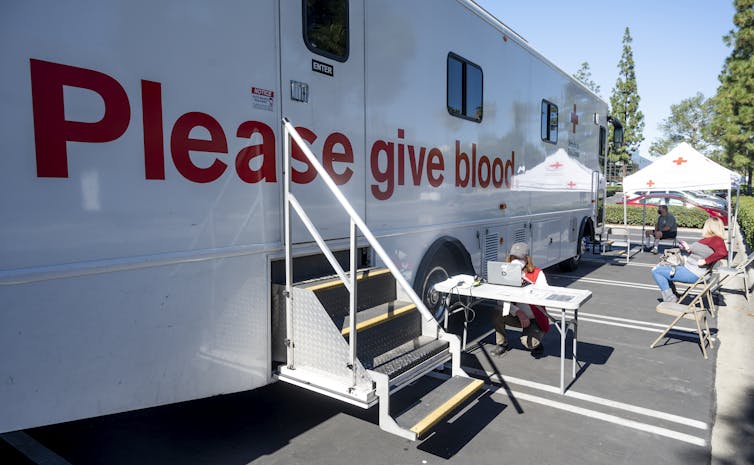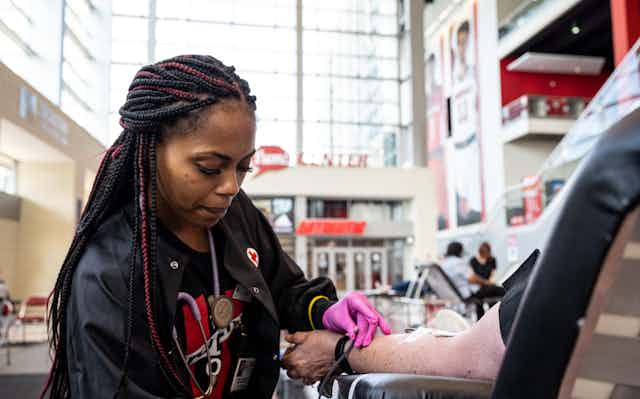Telling people who have donated blood when and where the blood was used makes them more likely to do it again, according to our new study. Donors who got details like the date and the hospital were 10% more likely to donate again than people who were just thanked.
Together with University of Hamburg marketing scholars Besarta Veseli and Michel Clement, we conducted real-world studies, backed by an online experiment.
Working with the Austrian Red Cross, we looked at whether nearly 75,000 people who had donated in the prior two years would return to give blood. They were either simply thanked or they also were given specific information about the date their blood was used and the name of the hospital where that happened. Those receiving specific information were 10% more likely to donate again than the thanks-only group.
The Austrian Red Cross also helped us see the role of timing in another study. The organization sent people a short text message, including the date when a donation was used and the hospital name, either three weeks after their donation or 10 days before they could donate again – roughly one month apart. Getting those details 10 days before they could donate again made them 63% less likely to give blood again compared to people who received the same message three weeks after their last donation.
In an additional study, we worked with the German Red Cross, which sent information to over 16,000 people who had not donated blood for over two years. They were either thanked for their previous donation, thanked and told how their blood was used, or thanked and told how their next donation would be used. These former blood donors were 11% more likely to donate again when they were told how their blood was used in the past compared to those who were just thanked or told how their future donation could be used.
To understand what drives this effect, we conducted an online experiment with nearly 500 people who had previously donated blood through the German Red Cross. When these people were prompted to imagine they had received a text message with details about the use of blood they had donated in the past, they felt like the organization cared about them more. Consequently, they said they’d be more likely to donate again.
Why it matters
Based on our initial findings, the Austrian Red Cross replaced its traditional thank-you message with information about when and where the blood was used. While we did not work with the American Red Cross, its app notifies people of the hospital where their blood is used.
If giving donors more information about how their blood was used boosts blood donations, it can save lives.
Although nearly half of the U.S. population is eligible to give blood, less than 10% donate at least once a year. Among those who give blood, there are some restrictions in place, such as requiring that donors wait at least 56 days before they do it again.
And blood is in constant demand. Every two seconds, someone in the U.S. needs blood, platelets or both, according to the American Red Cross, a nonprofit that collects 40% of the country’s blood donations.
Because not everyone who is eligible to give blood ever donates, there are periodic shortages, which have become more frequent. The Red Cross declared one on Sept. 11, 2023, which it attributed to “back-to-back months of almost constant climate-driven disasters” that made it harder for people who might otherwise have donated blood to be able to do so.
Chronic shortfalls can lead hospitals to postpone transfusions and surgeries.

What’s next
Unfortunately, some donated blood is discarded rather than used in transfusions and other medical procedures. We plan to discover whether and how organizations that collect donated blood should tell donors when that happens with their blood.
We also aim to analyze whether telling regular donors repeatedly about their blood’s use will make more or less of a difference over time.
The Research Brief is a short take on interesting academic work.

